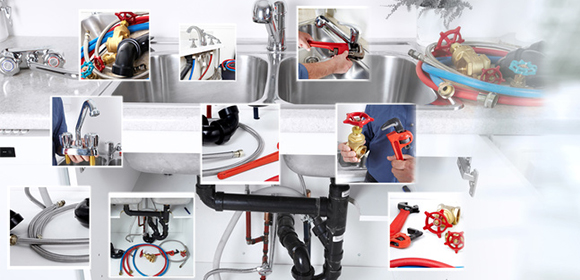How to get the plumbing in your new home working
There are many different types of plumbing specialists. Some specialize in repairing and maintaining water systems, while others install and service drainage and sewage systems. No matter what your needs may be, it is important to find a plumbing specialist who has the experience and knowledge to get the job done right. By doing your research and asking for referrals, you can find a plumbing specialist who will meet your needs and exceed your expectations.
If you're a homeowner, then you know that there are certain systems in your home that you need to take care of in order to keep it running smoothly. One of those systems is plumbing. Unfortunately, many homeowners don't know how to properly take care of their plumbing and end up with costly repairs. In this blog post, we will discuss some tips on how to get the plumbing in your home taken care of.
If you're like most people, when you buy a new home, the last thing on your mind is the plumbing. But if you don't take care of the plumbing problems early on, they can become a real headache down the road.
That's why it's important to hire a professional plumber as soon as possible after you move in. A good plumber will be able to quickly assess any plumbing problems and make the necessary repairs.
Image Source
If you're like most people, the prospect of moving into a new home is both exciting and daunting. One of the many tasks you'll need to take on is getting the plumbing up and running. Here are a few tips to help make the process go smoothly.
1. Check for leaks. The first step is to check all fittings and pipes for leaks. A simple way to do this is to run your faucet until the water runs hot, then turn it off and wait a few minutes for the water to cool. If you see any water dripping from a pipe or fitting, that's a sign that you have a leak and will need to address it before proceeding.
2. Flush the system. The next step is to flush the system. This will get rid of any debris or sediment that may have built up over time. To do this, turn on all the faucets in your house and let them run until the water is clear.
3. Check the water pressure. Once you've flushed the system, check the water pressure. If it's too low, you may need to call a plumber to increase it. Low water pressure can be a sign of a bigger problem, such as a leaky pipe.
4. Install the shut-off valves. Before you connect any of the pipes, install the shut-off valves for each fixture. This will allow you to easily turn off the water when needed (for example, when doing repairs).
5. Connect the pipes. Once the shut-off valves are installed, connect the pipes according to the diagram provided by the manufacturer. Make sure to use Teflon tape or pipe sealant to prevent leaks.
6. Turn on the water and check for leaks. Once all the pipes are connected, turn on the water and check for leaks. If you find any, address them immediately.
7. Test each fixture. Finally, test each fixture to make sure it's working properly. This includes the faucets, shower, and toilet.
If you're a homeowner, it's important to know how to take care of basic plumbing problems yourself. That way, you can avoid costly repairs and emergency plumbing services. In this blog post, we'll teach you how to get the plumbing in your home working properly again. We'll also give you some tips on preventing common plumbing problems from happening in the first place.
Image Source
Are you in need of a plumbing specialist? If so, look no further than the professionals at our company. We have years of experience working on all sorts of plumbing projects, from small repairs to brand new installation. No job is too big or too small for us we can handle it all! So what are you waiting for? Contact us today and let us help you get your plumbing system up and running like new. You won’t regret it!
Conclusion paragraph:
When you are getting ready to move into your new home, one of the last things on your mind is probably the plumbing. However, it’s important to take a few minutes and do some preparation so that everything is in working order when you get there. If you live in an area with hard water, for example, you will need to have a water softener installed. The good news is that most of these preparations can be done ahead of time by contacting your local plumber. So don’t wait until the last minute contact EZ PLUMBING USA today and let us help make your transition into your new home as smooth as possible!
Author Bio:- Josephine Floyd
Josephine Floyd is a marketing head at EZ PLUMBING USA He is an experienced marketing leader with over 12 years of experience in the plumbing industry. With extensive knowledge of severe water damage, mold damage, and fire damage, as well as general plumbing services, he writes articles about water and flood damage repair and restoration along with heating installation, maintenance, and repair to make readers aware of the potential risk and quick actions they can take to reduce damage. Keep reading his latest articles to have an understanding of whether your plumbing system is intact or not; if not, what you should do to fix it.



Comments
Post a Comment